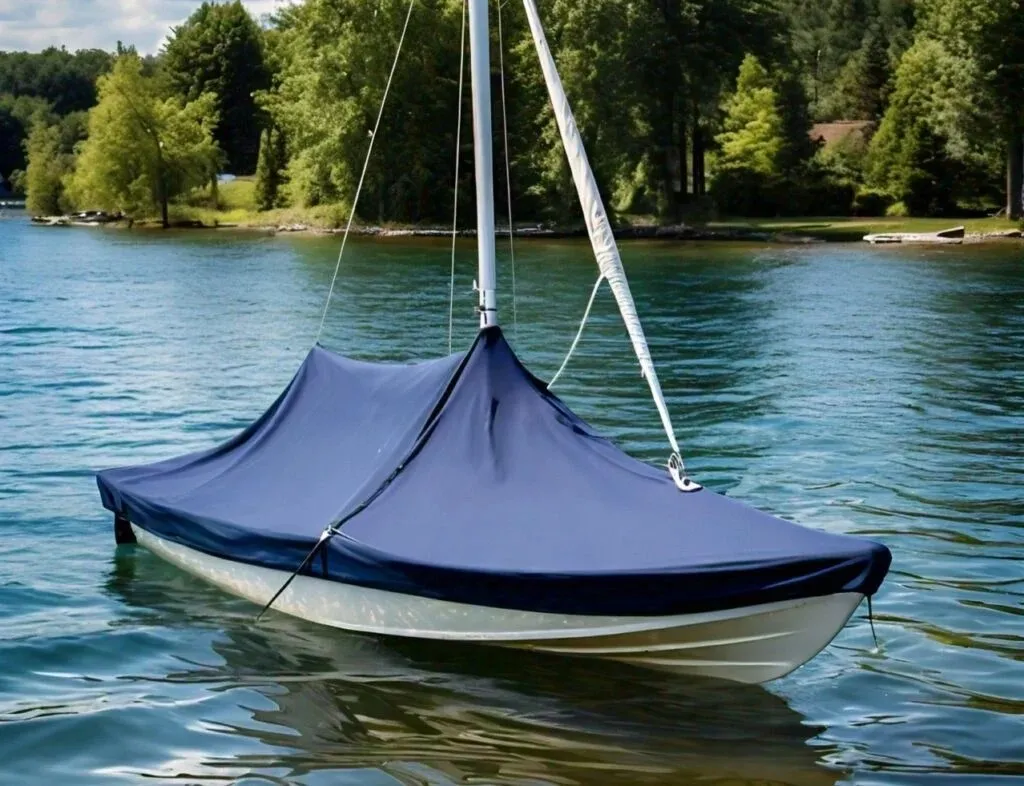
Introduction
One of the most common concerns when protecting your boat is ensuring it stays dry and protected from the elements. This brings us to the question: are boat covers waterproof? In this comprehensive guide, we’ll explore everything you need to know about boat covers, their materials, and their effectiveness at keeping your boat dry.
What Are Boat Covers?
Types of boat covers
Boat covers come in different types and materials, each designed to protect your boat in different conditions. The main types include:
- Custom Covers – Fit the specific make and model of your boat.
- Semi-Custom Covers: Perfectly fit a variety of boat shapes and sizes.
- Universal covers are designed to adapt to various ships, providing the greatest flexibility.
Materials Used in Boat Covers
The materials used in boat covers are crucial in their effectiveness and durability. Common materials include:
- Polyester: Recognized for its strength and resistance to UV rays.
- Canvas: Traditional and breathable, but may require more maintenance.
- Vinyl: Very water resistant, but can be prone to tearing if not handled carefully.
Are Boat Covers Waterproof?
Understanding waterproofing and water resistance
It is essential to distinguish between waterproof and water-resistant boat covers. Waterproof covers are designed to completely prevent water from penetrating the material. Water-resistant covers, on the other hand, can repel water to some extent but may let in some moisture during heavy rain or prolonged exposure.
Waterproof capabilities test
To determine if a boat cover is truly waterproof, consider the following factors:
- Material quality: High-quality polyester and vinyl are usually used in waterproof covers.
- Seams and seams: Look for covers with double or heat-sealed seams to prevent water entry.
- Coatings and Treatments: Many covers feature additional waterproof coatings or treatments to improve their water-blocking capabilities.
Benefits of Waterproof Boat Covers
1. Protection from the elements
Waterproof boat covers provide superior protection against rain, snow, and UV rays, helping to extend the life of your boat.
2. Mold Prevention
By keeping water out, these covers help prevent the growth of mold, which can damage your boat’s interior and cause health problems.
3. Preserve the value of the boat
Regular use of a waterproof cover helps maintain the aesthetic and functional condition of your boat, thus preserving its value over time.
Choosing the Right Boat Cover
Factors to consider
Why Use a Waterproof Boat Cover?
Using a waterproof boat cover offers several advantages:
- Protection from Elements: Keeps your boat dry and free from water damage.
- UV Protection: Shields the boat from harmful UV rays that can cause fading and deterioration.
- Cleanliness: Prevents dirt, debris, and bird droppings from accumulating on your boat.
- Extended Lifespan: Helps maintain the boat’s condition, reducing the need for frequent repairs and replacements.
Factors to Consider When Choosing a Waterproof Boat Cover
Material Quality
The quality of the material is crucial for the effectiveness of a waterproof boat cover. Look for covers made from high-quality, durable materials such as polyester or marine-grade canvas. These materials are known for their water resistance, durability, and UV protection.
- Polyester: Lightweight, durable, and resistant to mold and mildew.
- Marine-Grade Canvas: Heavier and more durable, offering excellent protection against harsh weather conditions.
Fit and Size
A properly fitting boat cover is essential for maximum protection. Measure your boat accurately, including the length, width, and height, to ensure you choose the right size. Some boat covers come in universal sizes, while others are custom-made to fit specific boat models.
- Custom Fit: Provides the best protection as it is tailored to the exact dimensions of your boat.
- Universal Fit: More affordable and versatile, but may not offer the same level of protection as a custom-fit cover.
Waterproof Rating
Check the waterproof rating of the boat cover. This rating indicates the cover’s ability to resist water penetration. Look for covers with a high waterproof rating to ensure maximum protection against heavy rain and snow.
- Waterproof Rating: Measured in millimeters, with higher numbers indicating better water resistance (e.g., 1000mm, 2000mm, etc.).
Ventilation
Proper ventilation is essential to prevent moisture buildup and mold growth under the cover. Look for boat covers with built-in vents that allow air to circulate while keeping water out.
- Vents: Help reduce condensation and prevent mold and mildew growth.
Secure Fastening System
A secure fastening system is crucial to keep the cover in place, especially during windy conditions. Look for covers with adjustable straps, buckles, and elastic hems that provide a snug and secure fit.
- Straps and Buckles: Adjustable straps and buckles ensure the cover stays in place.
- Elastic Hems: Provide a tight fit around the edges of the boat.
Benefits of Using a Waterproof Boat Cover
Protection from Water Damage
Waterproof boat covers prevent water from seeping into your boat, protecting it from water damage, mold, and mildew. This is especially important if you store your boat outdoors or in a humid environment.
UV Protection
UV rays can cause significant damage to your boat’s paint, upholstery, and other materials. A waterproof boat cover with UV protection shields your boat from these harmful rays, preventing fading and deterioration.
When selecting a boat cover, consider these factors:
- Boat Size and Shape: Make sure the cover fits your boat’s dimensions precisely.
- Climatic and weather conditions: Consider the typical climate in your area; Harsher climates may require stronger protection.
- Frequency of Use: If you use your boat frequently, it will be beneficial to have a cover that is easy to remove and replace.
Best Waterproof Boat Cover Brands
Some of the top brands known for their high-quality waterproof boat covers include:
Brand A
Brand B
Brand C
How to Maintain Your Boat Cover
Regular cleaning
To keep your boat cover in top condition, clean it periodically with mild soap and water. Avoid harsh chemicals that can damage the waterproof coating.
Proper storage
When not in use, store your boat cover in a cool, dry place. Make sure it is completely dry before folding to prevent mold from forming.
Inspect for damage
Periodically inspect your cover for tears, holes, or seam problems. Repair any damage quickly to maintain its waterproof capabilities.
Conclusion
In conclusion, not all boat covers are created equal. Although many are waterproof, truly waterproof cases are designed to provide maximum protection from the elements. When choosing a boat cover, consider the material, stitching, and any additional waterproof treatments to ensure your boat remains dry and protected. Regular maintenance and proper storage will further improve the longevity and effectiveness of your boat cover.
FAQs
1. Are all boat covers waterproof?
No, not all boat covers are waterproof. Some are water-resistant, which means they can repel water to a certain extent but may not block all moisture.
2. How can I tell if a boat cover is waterproof?
Check the material (polyester or vinyl is common for waterproof covers), look for double-stitched or heat-sealed seams, and see if the cover has any additional waterproof coatings.
3. Can I use a water-resistant cover for my boat?
You can, but it may not provide the same level of protection as a waterproof cover, especially in heavy rain or prolonged exposure to moisture.
4. How often should I clean my boat cover?
It’s a good idea to clean your boat cover at least once a season, or more frequently if it’s exposed to harsh conditions or gets dirty quickly.
5. What is the best material for a waterproof boat cover?
Polyester and vinyl are both excellent choices for waterproof boat covers, offering durability and effective water-blocking properties.
 The Boat Journey
The Boat Journey
Leave a Reply